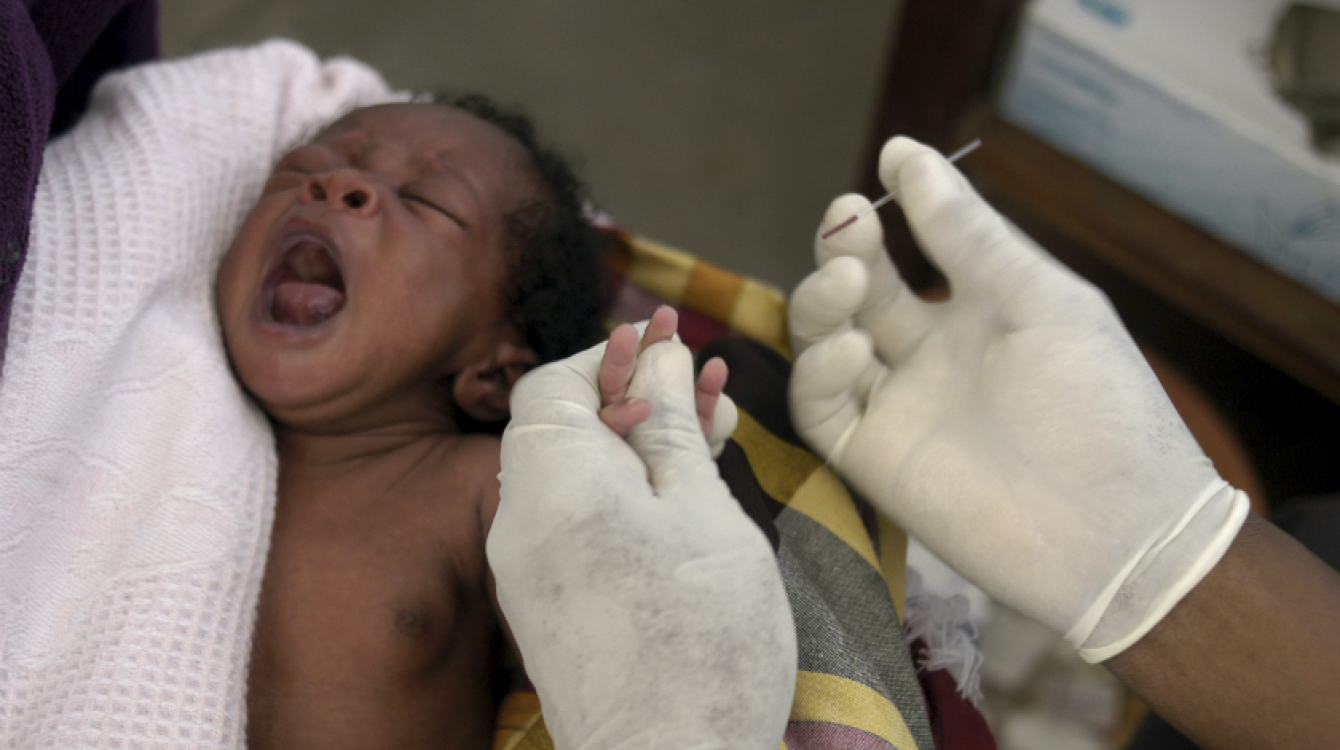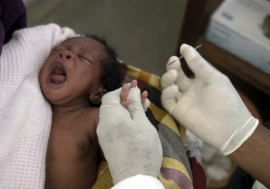Gains made in fight against malaria
Gains made in fight against malaria
The World Health Organization (WHO) announced in December 2015 that the global incidence of malaria had finally been slowed, thanks in large part to a massive rollout of mosquito nets, anti-malaria medicines and indoor residual spraying of insecticides. The news was particularly welcome in Africa, where the disease has been the deadliest.
Malaria is caused by parasites that are transmitted to people through the bites of infected female anopheles mosquitoes.
Between 2000 and 2015, malaria mortality rates in Africa fell by 66% among all age groups. Among children under five, who are the most vulnerable to the disease, fatalities fell by 71%, from 694,000 to 292,000 deaths, during the same period.
Progress in the use of mosquito nets has been impressive. WHO data shows that in 2000, just 2% of the 667 million people living in sub-Saharan Africa at that time slept under mosquito nets. By 2015, more than half of Africa’s 1 billion people were using bed nets.
In addition, Margaret Chan, the director-general of WHO, wrote in the foreword of the World Malaria Report 2015 that “a rapid expansion in diagnostic testing and the availability of antimalarial medicines has allowed many more people to benefit from timely and appropriate treatment.”
A coordinated approach
Efforts to prevent malaria have also resulted in significant health care cost savings. Sub-Saharan countries saved up to $900 million on the costs of malaria case management between 2001 and 2014, notes the world health body. Mosquito nets represented the biggest cost savings, followed by artemisinin-based combination drug therapies (ACTs) and indoor residual spraying.
An ACT consists of an artemisinin-based compound combined with a drug from a different class. Medical experts recommend the use of a combination of drugs because using one drug can speed up the development of drug resistance in parasites.
Much progress in the malaria fight has been the result of global partnerships and funding schemes established in 2000. A notable partnership is the Roll Back Malaria (RBM) initiative, which was set up by WHO, the United Nations Children's Fund (UNICEF), the UN Development Programme (UNDP) and the World Bank. Under the RBM, over 500 development groups, private- and public-sector organizations and research and academic institutions have pooled their resources and expertise to fight the disease.
High-profile partnerships are effective, as they put pressure on governments to fight diseases, stated the Centers for Disease Control and Prevention (CDC), an American public health institute, in a 2011 report.
The report commended leaders in malaria-endemic countries for their commitment to treating malaria control as a national priority, as they agreed to do under the 2001 Abuja Declaration and Frameworks for Action on Roll Back Malaria and the UN Millennium Development Goals.
Funding for malaria programmes has reached unprecedented levels. Money has come in through schemes such as the US President’s Malaria Initiative and the Global Fund to Fight AIDS, Tuberculosis and Malaria. Global financing for malaria control increased from $960 million in 2005 to $2.5 billion in 2014, according to WHO’s World Malaria Report 2015.
The road to elimination
Yet despite recent progress the fight is far from over. Africa, the epicentre of the disease, is still vulnerable. Last year 88% of the 214 million cases and 90% of the 438,000 malaria deaths reported worldwide occurred in the WHO African region. The region includes Algeria but excludes Sudan and Somalia.
While malaria is no longer the leading cause of death of children under the age of five in Africa (pneumonia is), the disease still threatens the young, killing a child every two minutes, according to non-profit organization Malaria No More. Progress made in African countries has also been uneven.
Algeria, Botswana, Cape Verde, Eritrea and Swaziland have all experienced sharp decreases in malaria cases, while just two countries, the Democratic Republic of the Congo and Nigeria, account for more than 35% of all malaria deaths worldwide. Of these two, Nigeria, Africa’s most populous nation, faces greater risk. Some 100,000 Nigerians die from malaria every year, states Malaria Consortium, a non-profit organization fighting the disease.
The Nigerian government has launched a national malaria elimination programme, ramping up the distribution of mosquito nets and access to drug therapies, and expanding a plan for vector management.
Côte d’Ivoire, Mozambique, Tanzania and Uganda also have high incidences of malaria. Countries with swampy terrain and humid weather are fertile breeding grounds for malaria-carrying mosquitoes. In addition, weak public health systems and conflict mean that many patients do not have access to treatment or malaria-prevention tools.
More monitoring and research
Dr. Christian Happi, a leading malaria researcher from Cameroon, says donors and aid groups need to move beyond distributing malaria control tools and focus more on monitoring how they are used.
“Many groups talk about the number of drugs and mosquito nets they have provided. Numbers make a good public relations campaign,” Dr. Happi, who specialises in molecular biology and genetics, said in an interview with Africa Renewal. “Are we keeping track of how these tools are used? The answer is no.”
While more than 1 billion mosquito nets have been distributed in sub-Saharan Africa since 2000, there are doubts about whether people are using them properly. The New York Times published a story in 2015 revealing that impoverished fishermen in Mozambique, Nigeria and Zambia were using mosquito nets as makeshift fishing nets.
One of the biggest hindrances to eliminating malaria in Africa is the prevalence of monotherapy, the use of only one drug to fight malaria. Although public health experts have warned that monotherapies can lead to drug resistance in parasites, the practice continues in many countries.
Dr Happi says African countries lack the robust monitoring systems needed to study drug resistance in parasites. “Behaviours of parasites change all the time. We need to collect blood samples and study them periodically. But African countries lack the resources to do this.”
Although progress in the fight against malaria in Africa is undeniable, experts insist its leaders should maintain the same determination that has brought recent successes.


























